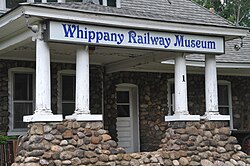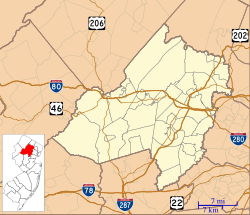
The Delaware, Lackawanna and Western Railroad, also known as the DL&W or Lackawanna Railroad, was a U.S. Class 1 railroad that connected Buffalo, New York, and Hoboken, New Jersey, and by ferry with New York City, a distance of 395 miles (636 km). The railroad was incorporated in Pennsylvania in 1853, and created primarily to provide a means of transport of anthracite coal from the Coal Region in Northeast Pennsylvania to large coal markets in New York City. The railroad gradually expanded both east and west, and eventually linked Buffalo with New York City.

NJ Transit Rail Operations is the rail division of NJ Transit. It operates commuter rail service in New Jersey, with most service centered on transportation to and from New York City, Hoboken, and Newark. NJ Transit also operates rail service in Orange and Rockland counties in New York under contract to Metro-North Railroad. The commuter rail lines saw 57,179,000 riders in 2023, making it the third-busiest commuter railroad in North America and the longest commuter rail system in North America by route length.

Cape May Seashore Lines is a short line railroad in southern New Jersey that operates both freight trains and excursion trains. It offers two excursion services: a 30-mile (48 km) round trip between Richland and Tuckahoe along the Beesley's Point Secondary railroad line and a 14-mile (23 km) round trip between Rio Grande, Cold Spring Village, and Cape May City along the Cape May Branch. The track is owned by NJ Transit and leased to the Seashore Lines. The Cape May Branch is the original line operated by the Cape May Seashore Lines and runs from Cape May north to Tuckahoe, connecting to the Beesley's Point Secondary in Tuckahoe. Cape May Seashore Lines operates freight service along the Beesley's Point Secondary line between Winslow and Palermo, interchanging with Conrail Shared Assets Operations in Winslow. Tony Macrie has been president of the Seashore Lines since he formed the railroad in 1984.

The Morristown Line is an NJ Transit commuter rail line connecting Morris and Essex counties to New York City, via either New York Penn Station or Hoboken Terminal. Out of 60 inbound and 58 outbound daily weekday trains, 28 inbound and 26 outbound Midtown Direct trains use the Kearny Connection to Penn Station; the rest go to Hoboken. Passengers can transfer at Newark Broad Street or Summit to reach the other destination. On rail system maps the line is colored dark green, and its symbol is a drum, a reference to Morristown's history during the American Revolution.
The Whitewater Valley Railroad is a heritage railroad in southeastern Indiana between Connersville and Metamora.

The Lackawanna Cut-Off was a rail line built by the Delaware, Lackawanna and Western Railroad (DL&W). Constructed from 1908 to 1911, the line was part of a 396-mile (637 km) main line between Hoboken, New Jersey, and Buffalo, New York. It ran west for 28.45 miles (45.79 km) from Port Morris Junction in Port Morris, New Jersey, near the south end of Lake Hopatcong about 45 miles (72 km) west-northwest of New York City, to Slateford Junction in Slateford, Pennsylvania near the Delaware Water Gap.

Morristown station is a NJ Transit rail station on the Morristown Line, located in Morristown, in Morris County, New Jersey, United States. It serves an average of 1,800 passengers on a typical weekday. Construction of the historic station began in 1912 and the facility opened November 3, 1913. A station agent and waiting room are available weekdays. The station's interior was featured in Cyndi Lauper's "Time After Time" video in 1984. Just west of the station, at Baker Interlocking, the Morristown and Erie Railway branches off the NJT line. The M&E's offices and shop are here.

The High Bridge Branch is a branch line that was operated by the Central Railroad of New Jersey (CNJ). As built, the branch started in High Bridge, New Jersey at a connection with the CNJ main line and continued north to iron-ore mines in Morris County. The High Bridge Branch line followed the South Branch of the Raritan River for much of its duration.

The Indiana Transportation Museum is a railroad museum that was formerly located in the Forest Park neighborhood of Noblesville, Indiana, United States. It owns a variety of preserved railroad equipment, some of which still operate today. ITM is currently Located in Logansport, Indiana.
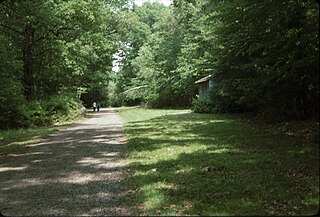
The Rockaway Valley Railroad, also known as the New Jersey and Pennsylvania Railroad and informally known as the Rock-A-Bye Baby, was an American short line. Built from a connection with the Central Railroad of New Jersey (CNJ) mainline in White House Station, New Jersey, the railroad traveled north to Watnong, New Jersey, a total distance of approximately 25 miles. The railroad was constructed between 1888 and 1892, predominantly to ship peaches from orchards that were abundant along the southern part of the line, but it also carried passengers and other freight along the entire route. The Rockaway Valley Railroad (RVRR) ceased operation in 1914 and was abandoned in 1917. Much of the old railbed is now part of a rail-trail.
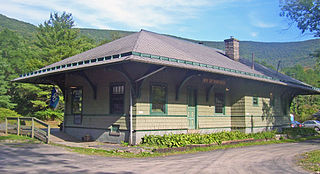
Established in 1960, the Empire State Railway Museum is a non-profit railroad museum currently located in the historic Ulster & Delaware Phoenicia Railroad Station, Phoenicia, New York. The station was built in 1899 by the U&D, and is one of the few surviving examples left along the line. The museum owns a small collection of historic railroad equipment. The museum was formerly the publisher of the annual Steam Railroad Directory until the 2006 edition, when the title was taken over by Kalmbach Publishing and now released as the Tourist Trains Guidebook.
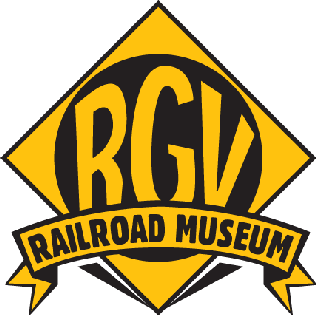
The Rochester and Genesee Valley Railroad Museum (RGVRRM) is an operating railroad museum located in Industry, New York, a hamlet within the town of Rush. The museum started in 1971 with the purchase of a former Erie Railroad Depot from the Erie Lackawanna Railroad. Since then the museum has grown to include a one-mile demonstration railroad, connecting it with the New York Museum of Transportation in Rush, making it one of the only operating railroad museums in New York State. The museum was formerly an operation of the Rochester Chapter National Railway Historical Society until 2011. The organization rosters more than 40 pieces of historic railroad equipment, including diesel and steam locomotives, electric trolley and multiple-unit cars, freight cars, cabooses, passenger cars, and work equipment. The museum campus includes a number of preserved railroad structures, including the 1909 Industry Depot built by the Erie Railroad, a waiting shelter from the Rochester, Lockport & Buffalo Railroad, and a crossing watchman's shanty from the New York Central. Train rides are operated and the museum is open to the public on select weekends from June through October, and is staffed entirely by volunteers.

The Montclair-Boonton Line is a commuter rail line of New Jersey Transit Rail Operations in the United States. It is part of the Hoboken Division. The line is a consolidation of three individual lines: the former Delaware, Lackawanna & Western Railroad's Montclair Branch, which ran from Hoboken Terminal to Bay Street, Montclair. The Erie Railroad's Greenwood Lake Division, a segment from Montclair to Mountain View-Wayne, originally ran from the Jersey City Terminal to Greenwood Lake, NY, and the former Lackawanna Boonton Line ran from Hoboken to Hackettstown, New Jersey.

Pompton Plains is a former railroad station in Pequannock Township, Morris County, New Jersey. United States. Located at 33 Evans Place in the Pompton Plains section of Pequannock, the station is a former stop on the Erie Railroad's Greenwood Lake Division. The station was a single side-platform station with service from Wanaque–Midvale station in Wanaque to Pavonia Terminal in Jersey City, where connections were made to ferries to New York City. The next station north was Pompton–Riverdale after 1951. The next station south was Pequannock station.

The Morristown and Erie Railroad Whippany Water Tank is located in Hanover Township, Morris County, New Jersey, United States. The water tank was built in 1904 by the Morristown and Erie Railroad and was added to the National Register of Historic Places on September 6, 2006.

The North Alabama Railroad Museum, Inc. is a railroad museum in Huntsville, Alabama. The museum, incorporated in 1966, is an all volunteer organization. The museum has a collection of rolling stock, a small train station, and a small heritage railroad called the Mercury and Chase Railroad which operates between April and December. The mission of the NARM is to "preserve railroad history in North Alabama and South Central Tennessee." It is run entirely by its 100-plus volunteers. The museum is open to the public daily, volunteers are usually available on Wednesdays and Saturdays. Admission to the museum is free, however there is a charge for riding the trains. A schedule of rides is available at the museum's website.

The Erie Lackawanna MU Cars were a fleet of electric multiple unit commuter railcars used by the Delaware, Lackawanna and Western Railroad (D&LW) and successor railroads in the state of New Jersey. The D&LW undertook electrification of its Morristown Line and related branches in 1929–1930, and purchased 141 motor cars from Pullman to operate it. These were supplemented by 141 unpowered trailers of various types which were converted from existing rolling stock. The multiple units were successful and remained in service until 1984.
The United Railroad Historical Society of New Jersey, Inc. is a non profit educational organization directed at supporting the preservation of New Jersey's historical railroad equipment and artifacts for the proposed New Jersey Transportation Heritage Center or in its absence, another railroad museum in New Jersey.

Morristown & Erie Railway is a short-line railroad based in Morristown, New Jersey, chartered in 1895 as the Whippany River Railroad. It operates freight rail service in Morris County, New Jersey and surrounding areas on the original Whippany Line between Morristown and Roseland, as well as the Morris County-owned Dover & Rockaway Branch, Chester Branch, and High Bridge Branch. The M&E also operated the Maine Eastern Railroad from November 2003 to December 31, 2015.

Essex Fells was the terminus of the Erie Railroad's Caldwell Branch in the Essex County community of Essex Fells, New Jersey. Located at the junction of Oak Lane and Chestnut Lane in Essex Fells, the station was also a connection to the Morristown and Erie Railroad, which continued west through Roseland towards Morristown. The next station north from the Essex Fells station was Caldwell heading northward to Great Notch in Little Falls, where the line connected to the New York and Greenwood Lake Railroad.

